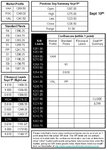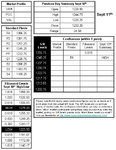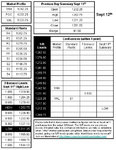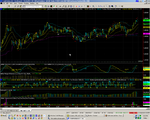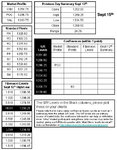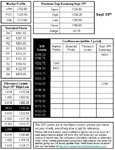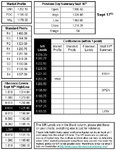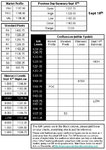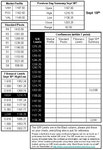I've got three questions. First how do you manage your trade. For example, do you set your stop loss at 6 points, your first target at 1 point and then let your second ride?
Also, do you do any premarket trading?
Lastly, would you mind sharing your trade setups?
Thanks.
- How I trade is pretty simple I believe
1. I use a 1hr, 4hr, and daily chart to plot my levels before the Market open. I have the levels marked up on my worksheet the one i send out for everyone.
2. I use a 1 min chart for my entries, on that chart I have Bollinger bands with a 20MA and 2 Standard Deviations as the settings
3. I also have a 1 min $tick chart.
The theory behind BBs using 2 standard deviations is that 95% of price action is contained within the Bands. That 5% that moves out of the bands is at an "extreme" and that move is unlikely to be sustained. Utimately resulting in price reverting back towards the mean. (The 20MA) This is called mean reversion.
I use this and also a 1 min $TICK chart with BBs, Also looking for extremes here also.
My thread is about indicators being Liars and how people that excessively and wrongly use indicators are destined to lose. S/R is the CORE of my method. If the $TICK and the 1min BB are at extremes at these levels this is my confirmation/ set up.
I only take trades close to the S/R levels I talk about (thus limiting my trades to areas where the probability of success is high. With extremes on the BBs and the $TICK I fine tune my entry.
- I do trade the premarket pretty often
- I split my contracts into 1/3s. I have targets of 3 ticks and 5 ticks on the first 2/3s and the last 1/3 is a runner.
My stop is usually 5 ticks from entry and as soon as price moves 3 ticks my way i move my stop to 3 ticks from entry. At this point I should hopefully have 1/3 filled at 3 ticks. The next 1/3 should hopefully be filled at 5 ticks
The 1/3 filled at 5 ticks is my guaranteed profit in the trade.
The Runner exit is discretionary. It is allowed 3 ticks of space from entry before I am taken out BE on the runner(because of the initial 3tick exit). In many instances price retests a level so i like to give my trade room to breathe (only a little room mind). I like to target around 3-5 points on the runner thus keeping my risk to reward at around 1:2. So i only need to be right 50% of the time to take home a nice income.
I am very risk averse, I have toyed with all in all out but have found that this defensive management helps to keep my risk small. Many traders talk about "letting your profits run" I find that very vague and concentrate on just making a profit in any given trade that is larger than any potential loss I could have had in that trade, instead of trying to hit 50 point home runs.
I hope this makes some sense. If not I can elaborate further

